Kaye Lynne Booth's Blog: Writing to be Read, page 56
July 28, 2023
Book Review: No Where Safe
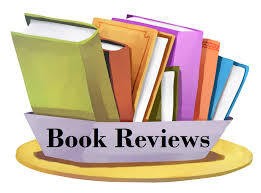 About the Book
About the Book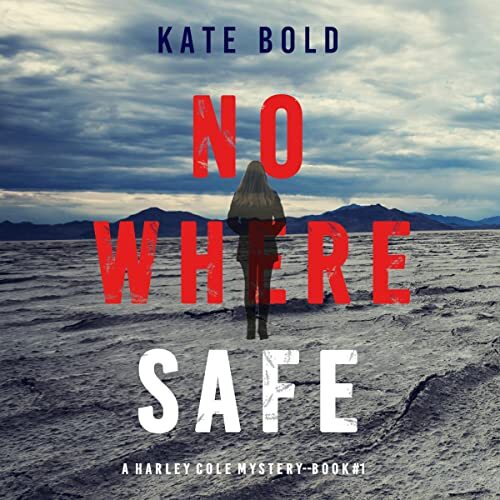
A harrowing crime thriller featuring a brilliant and tortured FBI agent, the Harley Cole series is a riveting mystery, packed with nonstop action, suspense, twists and turns, revelations, and driven by a breakneck pace that will keep you listening late into the night. Fans of Rachel Caine, Teresa Driscoll, and Robert Dugoni are sure to fall in love.
Purchase Links:
Audible: https://www.amazon.com/Nowhere-Safe-Harley-Suspense-Thriller/dp/B0B69KK2Y3/
My ReviewI listened to the audiobook of Nowhere Safe, by Kate Bold, and narrated by Reagan Tankersley. Nowhere Safe is book 1 in A Harley Cole Mystery series. Bold has written a true to form crime mystery, but I’m not sure a male narrator was the best choice for this female protagonist’s tale. Although Tankersley’s reading is done quite well, adaquate in every way, but I felt it was harder to relate with the female character when read by a male voice, and Tankerly’s voice is a deep male voice.
FBI agent Harley Cole, denies she’s in crisis when she’s put on leave from her job, her relationship ends abruptly, and she learns that her father is dying and she must return to the home town she’s tried so desperately to escape. At first, helping out the local law enforcement when a series of young girls are found terrorized and murdered is just a diversion, to avoid confronting her dying father, but it stirs memories of her missing sister, and all the reasons that she has stayed away. Can Harley put her personal troubles aside to make amends wirth her father and save the next victim from a terrifying fate in time? No spoilers here. You’ll have to read the book and find out.
A perfectly shaped crime mystery with distinctive characters, brought to life by a skilled and talented narration. I give No Where Safe four quills.

________________________________________________________________________________
Kaye Lynne Booth does honest book reviews on Writing to be Read in exchange for ARCs. Have a book you’d like reviewed? You can request a review here.
July 25, 2023
Dark Origins – Hotel on the Corner of Bitter and Sweet by Jamie Ford and the forced interment of the Japanese Americans during WW2 #DarkOrigins #WW2 #civiliansduringwar

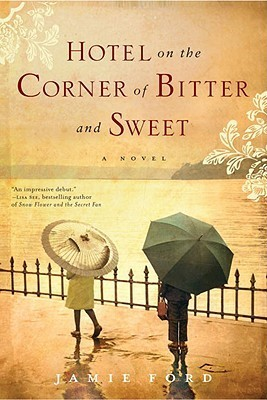 An overview of the book
An overview of the bookHotel on the Corner of Bitter and Sweet is a historical novel written by Jamie Ford. The plot makes use of a dual timeline: one featuring Henry as a 12-year-old Chinese boy growing up during World War II and the other depicting Henry 44 years later as a widow with an adult son.
The storyline revolves around the friendship between Henry, the only son of immigrant Chinese parents living in Seattle, Washington, and Keiko, the daughter of a second-generation Japanese family. Henry and Keiko become friends as the only two Asian children at their elementary school. They are both bullied by their white peers, and they are both expected/forced to work as free labour in the school cafeteria dishing up meals and cleaning up in terms of their scholarships.
When Japan bombs Pearl Harbour and the USA enters the war, the anti-Japanese sentiment in America increases. Henry’s father, who only speaks Cantonese and who despises the Japanese because of the Japanese invasion of the Chinese province of Manchuria in 1931 and the impact it had on Henry’s father’s life, is concerned about his son’s safety. He forces Henry to wear an “I am Chinese” badge so that he isn’t mistaken for Japanese. Henry’s father is ardently anti-Japanese and Henry hides his friendship with Keiko and her family from him.
As the war progresses, the anti-Japanese sentiment in America increases and all people of Japanese ancestry are viewed as potential spies and war criminals. This culminates in the US government ordering all the people in Japan Town where Kaiko lives (adjacent to China Town where Henry lives) to relocate to internment camps.
Keiko’s family is transferred temporarily to Camp Harmony, a temporary internment facility on the Western Washington Fairgrounds in Puyallup, Washington. Henry is able to visit her through a collaboration with the lady who runs the cafeteria at his elementary school. He assists her in serving meals to the internees on a Saturday.
Eventually, Keiko’s family is transferred to the Minidoka internment camp in Idaho. Henry visits her there once with an older musician friend and they become betrothed. They agree to wait for each other and to write to each other.
Sadly, due to Henry’s father’s fanatical anti-Japanese attitude, this never turns out as planned and Henry loses touch with Keiko.
The second timeline features Henry as an older man with a grown son, Marty, who is studying at the local college. Henry wife, Ethel, has passed away from cancer and he is living alone. One day, Henry learns that the possessions of several Japanese American families who were forced to leave Japan Town have been discovered in the basement of the Panama Hotel. Henry goes to the hotel to investigate as he believes that some of Keiko’s families stored possessions might still be there. Henry has never forgotten Keiko even as he cared for his critically ill wife, but he kept his thoughts to himself. He eventually finds the courage to confide in Marty and his fiance about Keiko.
In summary, this book is about how warfare effects the lives of everyday people and civilians living away from the front lines. Keiko and Henry’s lives are both turned upside down due to the culture of fear, anger, and animosity that dominates during times of war.
Although the temporary and permanent internment camps where Keiko and her family live are both featured in this book, the camps are not a main character as is the case in some books about similar topics.
Dark originsHotel on the Corner of Bitter and Sweet revolves around the forced internment of Japanese American citizens during WW2.
During WW2, the US government forcibly relocated and incarcerated approximately 125,000 people of Japanese descent in 75 different internment facilities. Of those interned, approximately 67% were American citizens. The internments were undertaken as a result of Executive Order 9066 signed into effect by President Franklin D. Roosevelt. This order allowed regional military commanders to designate ‘military areas’ from which ‘any or all persons may be excluded’. People of Japanese ancestry were forced to leave Alaska, California and parts of Oregon, Washington and Arizona on the strength of this order.
Japanese Americans were initially prevented from participating in the military, but in 1943 this was changed and 20,000 Japanese Americans fought in the war on behalf of America. According to Hotel on the Corner of Bitter and Sweet, the internees volunteered for military services to prove their loyalty to their new country.
I was interested to learn that by 1992, the US government disbursed $1.6 billion in reparations to 82,219 Japanese Americans who had been incarcerated.
These are a few pictures that correlate with the content of this book taken from https://www.history.com/topics/world-war-ii/japanese-american-relocation
 The Mochida family featured in this picture were among the thousands of Japanese-Americans forced into internment camps during WWII https://www.history.com/topics/world-war-ii/japanese-american-relocation
The Mochida family featured in this picture were among the thousands of Japanese-Americans forced into internment camps during WWII https://www.history.com/topics/world-war-ii/japanese-american-relocation

Japanese Americans incarcerated in crowded conditions in Santa Anita. https://www.history.com/topics/world-war-ii/japanese-american-relocation
A few powerful quotes from Hotel on the Corner of Bitter and Sweet“The hardest choices in life aren’t between what’s right and what’s wrong but between what’s right and what’s best.”
“Henry, this isn’t about us. I mean it is, but they don’t define you by the button you wear. They define you by what you do, by what your actions say about you. And coming here, despite your parents, says a lot to them- and me. And they’re Americans first. They don’t see you as the enemy. They see you as a person.”
“The more Henry though about the shabby old knickknacks, the forgotten treasures, the more he wondered if his own broken heart might be found in there, hidden among the unclaimed possessions of another time. Boarded up in the basement of a condemned hotel. Lost, but never forgotten.”
“Henry looked up and down the empty avenue—no cars or trucks anywhere. No bicycles. No paperboys. No fruit sellers or fish buyers. No flower carts or noodle stands. The streets were vacant, empty—the way he felt inside. There was no one left.”
About Roberta Eaton Cheadle
Award-winning, bestselling author, Roberta Eaton Cheadle, is a South African writer and poet specialising in historical, paranormal, and horror novels and short stories. She is an avid reader in these genres and her writing has been influenced by famous authors including Bram Stoker, Edgar Allan Poe, Amor Towles, Stephen Crane, Enrich Maria Remarque, George Orwell, Stephen King, and Colleen McCullough.
Roberta has two published novels and has horror, paranormal, and fantasy short stories included in several anthologies. She is also a contributor to the Ask the Authors 2022 (WordCrafter Writing Reference series).
Roberta also has thirteen children’s books and two poetry books published under the name of Robbie Cheadle, and has poems and short stories featured in several anthologies under this name.
Roberta’s blog features discussions about classic books, book reviews, poetry, and photography. https://roberta-writes.com/.
Find Roberta Eaton CheadleBlog: https://wordpress.com/view/robertawrites235681907.wordpress.com
Twitter: https://twitter.com/RobertaEaton17
Facebook: https://www.facebook.com/robertawrites
Amazon: https://www.amazon.com/Roberta-Eaton-Cheadle/e/B08RSNJQZ5
_____________________________________________________________________________________________
Want to be sure not to miss any of Robbie’s “Dark Origins” segments? Subscribe to Writing to be Read for e-mail notifications whenever new content is posted or follow WtbR on WordPress. If you found it interesting or entertaining, please share.
July 24, 2023
A Review of Through The Nethergate by Roberta Eaton Cheadle
An excellent review for an excellent book – “Through the Nethergate” by Roberta Eaton Cheadle – Wahoo! Way to go Robbie.
 charles french words reading and writing
charles french words reading and writing
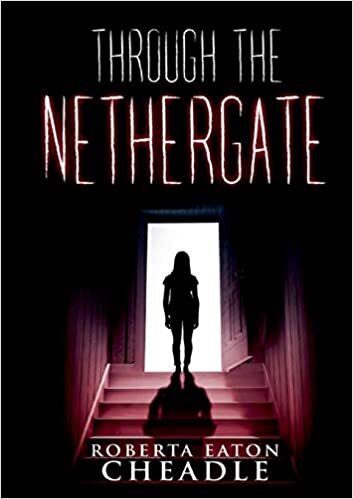
I am very happy to write this review of an excellent novel!
Through The Nethergate by Roberta Eaton Cheadle is a wonderful YA novel that will be appreciated by readers of all ages! Cheadle does an excellent job of weaving true historical characters into her tale that pits a teenaged girl, along with her Grandfather, and a few other helpers, against the very forces of Hell itself.
I deeply appreciated the way Cheadle was able to tell the historical tales and intertwine them into the main plot. Cheadle makes this book about history and its connection to our times.
Her development of characters is very strong, and the reader will care what happens to Margaret, the young protagonist of this novel. Margaret is a very special young lady who along, with a supernatural ability, shows empathy and courage as she faces terrible horrors. She witnesses the terrible actions of people…
View original post 88 more words
Tales from the Bird Sanctuary: Look at all the colors!

This spring and summer have been exceptional for the bird sanctuary, in that I have had a variety large variety of birds, including several which have not visited in years past. I always love spotting new birds, and trying to identify them with the help of my Field Guide to Birds: Western Region, put out by the National Audobon Society. Over the years, I’ve had several editions of this book because it can be very helpful in figuring out who my avian guests are.
What is different about this year is the variety of colorful birds that adorn my yard. I’ve got red-breasted Robins, orange and black Evening Grosbeaks, black and white of Nutall’s Ladderback Woodpeckers with splashes of red, pink-splashed Cassin’s Finches, and Rufus-sided Towhees, and Blue Jays of varying shades.











At the time of this writing, I’m trying to identify a black and white bird with a huge patchof red on it’s chest, which might well be a Painted Redstart, and of course I always get the brilliant luminescent colors of my Rufus and Allen’s Hummingbirds. And, this year, I have an abundance of the brighest, most colorful bird I have ever seen in the wild, the Western Tananger – a bright yellow and black bird with a vividly bright orange head. I have had an onslaught of these birds this spring, when, in previous years, they have been scarce and I was lucky to have maybe one or two sightings.
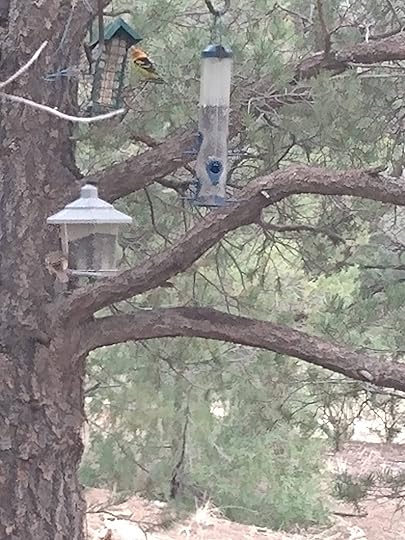
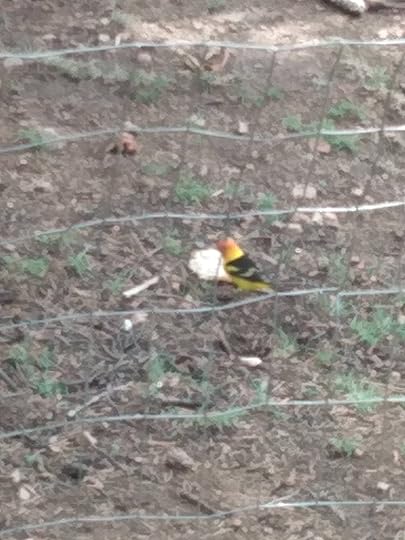

July 21, 2023
Book Review: Wrong Place, Wrong Time
 About the Book
About the Book
Having lost everything, I leave memories of a London police cell behind me and head for Marbella in Spain with its promise of adventure and fun. Little do I know that I’m about to be thrust into the most terrifying time of my life.
Wrong Place Wrong Time is a gripping true-life story of an unimaginable nightmare and how my ticket to a new life turns out to be a one way ticket to hell.
Purchase Link: https://www.amazon.com/Wrong-Place-Time-Productions-Reservations-ebook/dp/B008955FG2
My ReviewWrong Place, Wrong Time, by David P. Pearlmutter is a gripping true auto-biographical story. Having made one huge mistake which rocked his world and changed his life direction, a fresh start in another country sounds like a good idea. Instead, he finds himself in so deep, he might not be able to pull himself out, when he truly is in the wrong place at the wrong time.
It’s obvious that in the brutally honest telling of this tale, the author reveals his own inner flaws, making no excuses for his own mistakes. Nor does Pearlmutter spare the ugly details throughout. Anyone who has been down on his luck can relate to David’s character in the story, and will understand his fear and his panic as his situation spirals downhill, completely out of control.
A tragic tale of missteps and mayhap, I give Wrong Place Wrong Time five quills.

__________________________________________________________________________
Kaye Lynne Booth does honest book reviews on Writing to be Read in exchange for ARCs. Have a book you’d like reviewed? You can request a review here.
July 18, 2023
Treasuring Poetry – Meet poets, bloggers, and writers, Emily Gmitter and Zoe the Fabulous Feline, and a review #TreasuringPoetry #Poetrycommunity #review

Today, I am delighted to welcome Emily Gmitter and her amazing writing cat, Zoe, to Treasuring Poetry. This is the first time I’ve interviewed such an interesting duo for this series and it has been a fabulous experience.
Welcome Emily and ZoeI’d like to thank Robbie for inviting me and my co-author, Zoe the Fabulous Feline, to be guests on her lovely Treasuring Poetry blog. We’re happy to be here with her and all of you wonderful poets! Zoe says “hello” too—she’s waving her paw at the screen.
Is writing poetry easier for you compared to prose or do you do a lot of editing and revision of your poems?While my initial writing efforts focused on poetry, and specifically, syllabic poetry, now I more often write short stories. However, poems or snippets of rhyme frequently find their way into my stories. My brain seems wired for rhyme, so if something comes to me, I don’t ignore it. But, to give you the short and direct answer to your question: I edit my prose far more than I do my poetry.
If I may elaborate, there is a distinct difference between the poet I thought I was back in the day, and the writer I hope I am today. Writing prose came much later in my life—that is, if you don’t count my very first short story, written in fourth grade, about a letter that was afraid of the dark. The story starts with a mom asking her daughter to take a letter to the mailbox. Just as the child is pulling the handle of the mailbox down and bringing the letter up to the opening, the letter starts to squirm and squeal in fear. It begs the child to not do it: “Please don’t drop me into the dark!” The child is startled, of course, but before she can say or do anything, the letter grows arms and legs and runs away. And that’s all I remember about that!
Getting back to your question … I’d add that, while I do edit my poetry, it seems most of my poems haven’t required heavy revision. I might tweak a word or two to keep the meter consistent or create an inner rhyme. Sometimes I’ve made an edit to deliberately include an alliterative phrase. But that’s about it. So I think syllabic poetry—unlike free verse—has always come easily to me. And it’s gotten easier as I’ve gotten older, or perhaps my personal bar has gotten lower. With my prose, though, it’s a far different story. The editing seems never-ending, but of course, at some point, you have to call it done.
I alluded to free verse; writing poetry in that style is not my forte, and has never been. Every once in a blue moon, something comes to me in that form, and usually it’s very short. (There is one example of that in my book, called “Soul Buddies.”) Free verse is much harder for me to write. I enjoy it, and I envy those who can create it, but it’s never come naturally to me. When I try to write it, it feels contrived. In one sense of the word, contrived is a positive thing; it’s what all writers do, right? We deliberately create a written piece; we calculate where to place an adjective, we assess whether a near-rhyme works well or at all. And on and on. So, contrived is not a dirty word. But it does have a negative sense, as well. When I find myself digging too deeply for words to convey what I wish to, the result sometimes feels forced and phony. I usually end up balling up the paper and aiming for the wastepaper basket. And that’s happened more times than I care to remember. I’ll leave free verse to those who can actually create it and spend my time enjoying the beauty of their creations.
Today I find that a poem is either there or it’s not. I most enjoy creating poetry when the words flow naturally. That feels like a gift. I write it down, and I leave it alone.
What mode (blog, books, YouTube, podcasts) do you find the most effective for sharing your poems with poetry lovers and readers?I incorporated my poems into my newly released book and, while I’m not sure of its effectiveness over alternative modes, I really enjoyed using my poetry to mix up the flavor of the book. I also share my poetry (as well as my short stories and artwork) on social media.
Now, Zoe is more clever than I, or perhaps I should say, she’s a bit less technically challenged than I. She’s on Facebook, too, but she also posts on her The Life & Times of Zoe the Fabulous Feline blog. (A bit contrived if you ask me. To which Zoe just said, “Who’s asking you?”) Speaking of the little imp, she would like to say something. And I think I should be afraid.
Hi, Robbie, it’s me, Zoe the Fabulous Feline! I just wanted to point out something Emily neglected to tell you, which is that my poems are also in our book. Sheesh! Well, at least she gave me credit for my blog. My short stories sometimes include poetry, and I share my short stories on my social media pages. I did write one story completely in syllabic rhyme, which is in our book; it’s called “Zoe and Friends’ Strange Adventure.” It’s too long to include here, so I’ll just summarize it for you:
A magic hat flies me and a couple of friends on a journey to different lands, one ruled by an evil dictator, and another led by a kind and compassionate old soul—the latter a land where a White Mist relays to us a message of hope and love. We return home with a new perspective.
I’m quite proud of that story-poem. (Story-poem might not be the right, or even a valid, term, but Emily would not let me say “epic poem”; she said I would sound terribly “arrogant.” I’m not even sure what that means, but it does not sound good.) About other modes for our writings: I’ve considered a podcast, but when I’d previously tried to teach Emily how to set up her own blog, that did not go well. Still, I took a chance and mentioned to her that I’d like her assistance with doing a “PodCAT” (a podcast for cats only). Well, I had to practically pick her up off the floor. So I took pity on her and did not push the idea. Anyway, I’m busy enough already. I’ll hand the baton back to Emily at this time and will be back if any other question catches my attention. Ciao for now!
Do you think poetry is still a relevant form of expressing ideas in our modern world? If yes, why?Yes, I do, because poetry is a window into our souls. Poets write from the heart, and because people are multi-faceted creatures, and because there is so much going on around us all the time, there is no end to the food that will feed a poet’s imagination. Relevance abounds!
And then we have that other class of poets who are relevant in our modern world—the songwriter. Songwriters write lyrics that tell their own stories but also often speak to all our lives. Some artists may stick with the typical love song and/or love-gone-wrong song, and others may risk commercial success for at least occasionally penning songs that speak truth to power. In the latter category, the words of Kris Kristofferson come to mind. His diverse catalog includes every kind of song imaginable, from love songs to humor to satire, from the bittersweet of love and loss to the blessings bestowed on us by a higher power. He also writes biting, politically charged, contemporary songs; just one example of Kristofferson’s many topical tunes is an older one, called “In the News.” (A word of caution: Based on real life events, these lyrics are not easy to read.)
In the News
Read about the sorry way he done somebody’s daughter
Chained her to a heavy thing and threw her in the water
And she sank into the darkness with their baby son inside her
A little piece of truth and beauty died
Burning up the atmosphere and cutting down the trees
The billion dollar bombing of a nation on its knees
Anyone not marching to their tune they call it treason
Everyone says God is on his side
See the lightning, hear the cries
Of the wounded in a world in Holy war
Mortal thunder from the skies
Killing everything they say they’re fighting for
Broken babies, broken homes
Broken-hearted people dying everyday
How’d this happen, what went wrong
Don’t blame God, I swear to God I heard him say
Not in my name, not on my ground
I want nothing but the ending of the war
No more killing, or it’s over
And the mystery won’t matter anymore
Broken dreamers, broken rules
Broken-hearted people just like me and you
We are children of the stars
Don’t blame God, I swear to God he’s crying too
Not in my name, not on my ground
I want nothing but the ending of the war
No more killing, or it’s over
And the mystery won’t matter anymore
Read about the sorry way he done somebody’s daughter
Chained her to a heavy thing and threw her in the water
And she sank into the darkness with their baby son inside her
A little piece of truth and beauty died
~ Kris Kristofferson ~ (In the News – YouTube)
It would be hard to be any more relevant in our modern world than that.
Which of your own poems is your favorite and why?Oh, this is a tough one! I have favorites in different categories. If we’re talking humorous, “The Spider” is my favorite. I understand some will not find the killing of insects to be a humorous topic, but I have a serious bug phobia, so perhaps I will be forgiven.
The Spider
There you were on my wall the other day,
It wasn’t easy for me, but I let you go on your way.
Soon you were out of sight, but not out of mind,
For I need to know where you are at all times.
I needn’t have worried,
Soon enough you were back.
And busily building a translucent track.
Can’t spare you again, you should’ve stayed gone.
But no, you had to come back and build a new home.
And now, Lord have mercy, I feel bad, it’s a sin,
But when it comes down to your home or mine—mine wins.
My favorite poem of poignancy is “Unjust Desserts.” And for a fun read, I would choose “Nashville-Rainbow Style,” because it tells the story of a most memorable vacation with a bunch of my musician friends. And finally I—
Helloooo, this is Zoe again. I mean, I love Emily, but she sure can go on and on sometimes. Here is a little ditty I wrote as the ending to my short story entitled “Zoe the Poet.” The publisher liked it so much, he insisted on including it in our book, and that’s why it’s my favorite.
Zoe the feline just checking in
To bring you a laugh, a tear, or a grin.
The stories I give you, they come from within,
Except when they come from without.
Please note: With that poem, I answered the question of poetry relevance, too … saying in four lines what Emily said in four paragraphs.
Why do you write poetry?It’s a good question. You could just as well ask why do I write prose? Both art forms paint images with words, and I equate words with power. Power to evoke emotions both positive and negative, power to entertain. And that’s what poetry is all about.
I love words! And I love to have fun with them. So my love of the English language is why I write anything at all. It’s also a way to communicate with others, a way of expressing myself without censoring myself, which I tend to do in oral communications. That’s the short and sweet answer to this question. As Zoe so kindly pointed out, I can go on and on, so if this satisfies, that’s cool. But I will say a few things more for those who like to read on and on.
As previously mentioned, my first writings of so many moons ago consisted entirely of poetry. But the truth is, these days I don’t set out to write poetry. These days, my creative endeavors have centered on prose and painting instead. However, I do still dip my toes in the pools of poetry every so often. Because of my love for language, I make a concerted effort to take advantage of the various forms of writing tools, such as alliteration, which adds interest to a piece, especially when it’s subtle—when it slips easily into the ear the way an old, well-worn glove slides over one’s hand.
Some short stories and all songs are poetry. In the short story category, flash fiction comes to mind, and especially those restricted-word-count story challenges; those can be poetry of the highest order. In word-challenge stories, one must use language in a very efficient yet meaningful way. When every word has to count, the result is often a rhythmic cadence that shouts “I am poetry!” I wrote the following in response to a 79-word challenge story. I may be biased but, to my mind, it is nothing if not poetic.
Letting Go
No shame in letting go. The freedom of the fall was stronger than her sister’s hand. They were having a passionate discussion. A decade separated the sisters. Their differences, strengthened over every day of each of those years, became more apparent as the discussion threatened to explode. The younger sister stood firm against the fire of her older sister’s fears. She knew it came from love, as surely as she knew she would survive the freedom of letting go.
My early poems came from a place of typical teen-age angst, most often fairly short expressions of whatever was on my mind at the time. Looking back at some of those now… well, I won’t say I’m embarrassed, exactly; I never planned for anyone to read them. But I am, at the least, amused at having taken myself so seriously back then. This might be the first poem I ever wrote. Needless to say, Growing Old did not make it into my book!
Growing Old
My brain is numb,
My heart is cold.
I must be dead,
Or am I old?
Was I describing my youthful thoughts on senility, dementia, growing old in general? Most likely the latter—the concept of aging in general—but the former shows that I had no real sense or kind thoughts about what it meant to be old. Clearly, I was not going to age gracefully!
Many of us younger folks had some angst about our elders—you know, those folks over thirty years of age and considered part of the establishment. Everybody expressed it in their own way. One of my earlier poems relays how I envisioned our world if nuclear powers were to lose their senses. It’s too long to include in this interview (it’s in my book), but here’s a stanza that shows the basic theme of the poem:
The Future of the Child
“What shall I be, Dad, when I grow up?”
Looking toward the future, an eager young pup.
“Anything you want, Son,” you say with a smile.
And secretly pray for the future of the child.
So, that was then, when I set out to write poetry. And this is now when I don’t. “Soul Buddies” is one of those short, free-verse poems that gave birth to itself without any help from me.
Soul Buddies
I found you so easily, where I found you,
not because you are predictable,
but because you go where I go.
You are where I am.
Worlds apart in time, bound by soul.
And that is my long answer to your question, Robbie. And to anyone who has read this far, thank you!
Which poem by any other poet that you’ve read, do you relate to the most [please provide the poem or a link to the poem] and why?
So many speak to me that it’s hard to choose the one that speaks the loudest. The volume also seems to change depending on my mood at any given time. But, at the top of my list of poets are Kris Kristofferson and Gibran Khalil Gibran. You might think Kris and Khalil is a strange pairing, but when you read the lyrics written by Kris and the poems written by Khalil, you see that both write poetry that hits you in your heart. Poetry that makes you wonder how they knew your innermost feelings.
Shel Silverstein is another genius I admire. His body of work is relatable, his sense of humor is bound to give the reader a new perspective on this crazy little thing called life. A well-known author of children’s books and poetry collections, his poems appear funny and light-hearted, and they are. But most contain considerable substance, as well. I really love “Put Something In” simply because it’s a great message, and not just for children.
I relate to this one a lot, at least partly because it speaks to the artist I fancy is in there somewhere, and the child I pray is still in there somewhere.
Put Something In
Draw a crazy picture,
Write a nutty poem,
Sing a mumble-grumble song,
Whistle through your comb.
Do a loony-goony dance
‘Cross the kitchen floor,
Put something silly in the world
That ain’t been there before.
~ Shel Silverstein ~
But you asked which one poem I relate to the most. I would choose this one by Gibran Khalil Gibran, called “Do Not Love Half Lovers.” In this poem, Khalil takes two simple idioms we’ve probably all heard all our lives (Live life to the fullest and Do it well or not at all) and presents them in a poetic fashion that is brilliant. This piece is accessible and contains valuable advice, yet is so mundane that it cannot help but be universal. I feel as though he was in my head when he wrote it. Who hasn’t, at one time or another, found themselves exhibiting such negative or self-damaging behaviors? Who hasn’t, at one time or another, felt only half alive?
One might say this poem reminds them that life is too short to live it only halfway. Others might say life is too long.
Do Not Love Half Lovers
Do not love half lovers
Do not entertain half friends
Do not indulge in works of the half talented
Do not live half a life
and do not die a half death
If you choose silence, then be silent
When you speak, do so until you are finished
Do not silence yourself to say something
And do not speak to be silent
If you accept, then express it bluntly
Do not mask it
If you refuse then be clear about it
for an ambiguous refusal is but a weak acceptance
Do not accept half a solution
Do not believe half truths
Do not dream half a dream
Do not fantasize about half hopes
Half a drink will not quench your thirst
Half a meal will not satiate your hunger
Half the way will get you no where
Half an idea will bear you no results
Your other half is not the one you love
It is you in another time yet in the same space
It is you when you are not
Half a life is a life you didn’t live,
A word you have not said
A smile you postponed
A love you have not had
A friendship you did not know
To reach and not arrive
Work and not work
Attend only to be absent
What makes you a stranger to them closest to you
and they strangers to you
The half is a mere moment of inability
but you are able for you are not half a being
You are a whole that exists to live a life
not half a life
~ Gibran Khalil Gibran ~
********
Well, I think I better stop here, Robbie. Zoe and I thank you again for this opportunity to take part in such a fun feature!
Thank you, Emily and Zoe, for being such entertaining guests.
Happiness is a Warm Cat by Emily Gmitter and Zoe the Fabulous Feline Blurb
BlurbIn Happiness is a Warm Cat, author Emily Gmitter and her feline friend, Zoe, serve up a mixed genre of short stories and poems brimming with passion, love, and humor. The majority of the stories are told from the perspective of her cat, Zoe—a cool cat of perspicacity if ever there was one. Zoe’s stories will make you laugh, cry, and occasionally scratch your head in wonder, while Emily’s stories of fiction and nonfiction mingle humor with a sharp poignancy that you’ll find both heartwarming and entertaining.
My reviewHappiness is a Warm Cat is a wonderfully unique book filled with experiences and adventures told through the eyes of Emily Gmitter’s fabulous cat, Zoe, as well as some beautifully written romantic and other fictional pieces and biographical stories about aspects of Emily’s life. There are also some lovely poems and several pictures of Emily’s artwork. All of the creations in this book are filled with vibrancy, colour, and passion.
The stories about Zoe and her adventures are fun filled and interesting. Zoe is typical of a cat and is filled with self importance and quite sure about her status as ‘top dog’. She does all manner of naughty things to ensure that Emily remembers her place in the family structure. Zoe is also big hearted and curious (aren’t all cats?) and likes to meet other animals, including Bella the dog and Burt the writing cat, Bella and Barre the Siamese twins, as well as spending time with her sister, Jaz. Zoe also gets to experience some pain and loss.
As a reader, I thought that experiencing daily life through the eyes of Zoe, was a wonderful way to make sense of everyday trials and tribulations and find the happiness in small things and moments.
A wonderful book for readers who appreciate experiencing the ordinary contentedness of life from a different perspective.
Purchase Happiness is a Warm Cat by Emily Gmitter and Zoe the Fabulous FelineAbout Emily Gmitter
Emily lives on the North Shore of Massachusetts. She loves to spend alone-time at the beach, fun-time singing at local karaoke clubs, and the rest of her time engaged in activities with family and friends … when she’s not reading, writing, or painting.
July 17, 2023
Women in America
How and why did women’s roles and movements change during the Progressive Era?
Prior to the turn of the century, the struggle for women’s suffrage had smoldered since Abigail Adams wrote her husband, John, asking that he “remember the ladies” as the Constitution of the United States was being drafted. John did not pay heed to her request and the battle for women’s suffrage had begun. In the following years, women lost the right of suffrage in New York in 1777, in Massachusetts in 1780, and in New Hampshire in 1784. Then in 1787, the Constitutional Convention placed the right to vote with the states and woman lost the right to vote in all states, except New Jersey. In 1807, it was lost there, as well. (2) It seemed that men were determined to keep women in the home and out of the political arena.
 Abigail Adams by Benjamin Blythe, 1766
Abigail Adams by Benjamin Blythe, 1766Women were just as determined to gain equal footing. The first women’s rights convention was held in Seneca Falls, New York on July 17, 1848, and Equal Suffrage was adopted in a general declaration of rights. (2 & 3) Women’s rights conventions were later held in Salem, Ohio and Worchester, Massachusetts in 1850, and from then until 1861, annual women’s rights conventions were held. Through the efforts of women like Elizabeth Cady Stanton, Lucretia Mott, Lucy Stone, Abbey Kelly Foster, Angelina and Sarah Grimke and Susan B. Anthony (3), the cry for women’s suffrage was heard in the political arena, but the men who held the power continued to ignore their pleas, as were the ballots of the 172 women that attempted to vote in New Jersey, in 1868, and the 44 ballots cast by women in Massachusetts, in 1870. In 1886, the Suffrage Amendment made it to the Senate, but was voted down 2 to 1. (2)
Women’s roles had been mainly restricted to the home and family, but industrialization and the Gilded Age saw more women in the factories and work places, working long hours for little pay, just like their male counter parts. The Progressive Movement offered a platform that women could use to gain support for the cause of suffrage. In 1890, the formation of the National American Women’s Suffrage Association came about when the two existing women’s groups, the American Women’s Suffrage Association, whose efforts had been directed at the state legislatures, and the National Women’s Suffrage Association, whose efforts had been directed toward an amendment to the U.S. Constitution, joined forces and combined their resources and voices. (1 & 3) The group concentrated on a state-by-state approach to gaining the right to vote, and first earned the right to vote in Wyoming, with Utah, Colorado and Idaho close behind. (1) The state of Washington granted women’s suffrage in 1910, and in 1911, California also passed suffrage. In 1912, three more states granted women suffrage: Oregon, Arizona, and Kansas. (2)

In the early 1900’s, the Congressional Union was formed and they campaigned for suffrage at the national level. (1) In 1911, 3,000 women ascended upon New York City in the name of women’s suffrage. During the election of 1912, Theodore Roosevelt Progressive Party included women’s suffrage in their platform. (2) While Woodrow Wilson played on progressive ideals on many issues as he strove for the presidency, women’s suffrage was not an issue that he supported. (1) On March 3, 1913, a women’s suffrage parade took place on Pennsylvania Avenue taking the cause right up to the White House, one day prior to Wilson’s inauguration. Members of the anti-suffrage movement damaged floats and attempted to block the parades passage, while thousands of spectators cheered and urged the women on. The demonstration continued only when troops were called in to restore order (1) after almost two hundred women had been injured in this mob action, yet no arrests were made. (2)
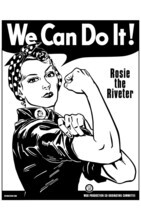
World War I saw even more women entering into factory labor and making labor contributions in support of the war effort. Women declared that their war contributions deserved recognition of their political equality. (4) In 1916, a breakaway group from the NAWSA, lead by Alice Paul formed the National Women’s Party. They began more radical tactics to push for a federal suffrage amendment. In January of 1917, they began posting “Sentinels of Liberty” at the White House. Beginning in June, almost 500 women were arrested and 168 did time in jail for the demonstration tactics. Those that did jail time were not released until 1918, when the Appellate court ruled that the arrests were illegal. President Wilson changed his position on women’s suffrage, and in a speech given on September 19, 1819, he openly supported the cause. In January of 1919, the NWP lit a “Watchfire for Freedom” and posted a guard until the Suffrage Amendment passed the Senate on June 4th. It was ratified by the required 36 states, with Tennessee being the final vote, and it became law on August 26th. (2) Charlotte Woodward, who had attended the original women’s rights convention in Seneca Falls at the age of 19, was the only member still alive to see the fruition of their efforts. (4)
1. U.S. History Lesson 52 – The Progressive Impulse: Women and Blacks in America. Themes in History: Diplomacy and Foreign Policy. 4 October 2009. https://cccs.blackboard.com/webct/RelativeResourceManager/Template/multimedia/lesson52/lessonp_nroc_nonap.html
2. No Author. Suffrage Activism Enters the 20th Century. Women’s Resources. 4 October 2009. http://dpsinfo.com/women/history/timeline.html
3. No Author. In the United States.
4. Lewis, Jane Johnson. August 26, 1920: The Day the Suffrage Battle Was Won. About.com. 4 October 2009. http://womenshistory.about.com/od/suffrage1900/a/august_26_wed.htm
________________________________________________________________
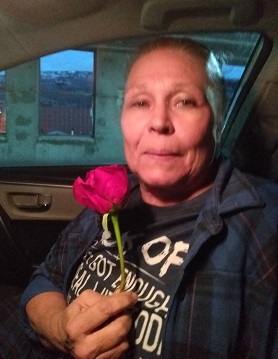
For Kaye Lynne Booth, writing is a passion. Kaye Lynne is an author with published short fiction and poetry, both online and in print, including her short story collection, Last Call and Other Short Fiction; and her paranormal mystery novella, Hidden Secrets; and book 1 of her Women in the West adventure series, Delilah. Kaye holds a dual M.F.A. degree in Creative Writing with emphasis in genre fiction and screenwriting, and an M.A. in publishing. Kaye Lynne is the founder of WordCrafter Quality Writing & Author Services and WordCrafter Press. She also maintains an authors’ blog and website, Writing to be Read, where she publishes content of interest in the literary world.
_____________________________________________________________
Want exclusive content? Join Kaye Lynne Booth & WordCrafter Press Readers’ Group for WordCrafter Press book & event news, including the awesome releases of author Kaye Lynne Booth. She won’t flood your inbox, she NEVER sells her list, and you might get a freebie occasionally. Get a free digital copy of her short story collection, Last Call and Other Short Fiction, just for joining.
July 14, 2023
Book Review: The Maid’s Diary
 About the Book
About the Book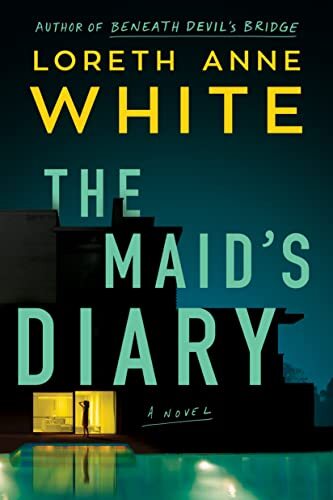
A cunning, twisty, and unsettling novel of psychological suspense with a startling conclusion by Loreth Anne White, the Amazon Charts and Washington Post bestselling author of The Patient’s Secret .
Kit Darling is a maid with a snooping problem. She’s the “invisible girl,” compelled to poke into her wealthy clients’ closely guarded lives. It’s a harmless hobby until Kit sees something she can’t unsee in the home of her brand-new clients: a secret so dark it could destroy the privileged couple expecting their first child. This makes Kit dangerous to the couple. In turn, it makes the couple—who might kill to keep their secret—dangerous to Kit.
When homicide cop Mallory Van Alst is called to a scene at a luxury waterfront home known as the Glass House, she’s confronted with evidence of a violent attack so bloody it’s improbable the victim is alive. But there’s no body. The homeowners are gone. And their maid is missing. The only witness is the elderly woman next door, who woke to screams in the night. The neighbor was also the last person to see Kit Darling alive.
As Mal begins to uncover the secret that has sent the lives of everyone involved on a devious and inescapable collision course, she realizes that nothing is quite as it seems. And no one escapes their past.
Purchase Link:https://www.amazon.com/Maids-Diary-Loreth-Anne-White-ebook/dp/B09TZM8CZK/
My ReviewThe Maid’s Diary, by Loreth Anne White is mystery with more twists and turns than I could count. Start with a murder scene with no body, add one missing maid and two missing homeowners and you have a murder mystery of the highest calliber. Once discovered, the answers seem to lie in the maid’s diary… or do they? All is not as it as it seems, and the answers lie twenty years in the past, so hold on to your seats as the story unravels and what really happened is revealed. I bet you’ll be surprised. I was.
A mystery that keeps you guessing to the very end, as all good mysteries should. I give The Maid’s Diary five quills.

_______________________________________________________________
Kaye Lynne Booth does honest book reviews on Writing to be Read in exchange for ARCs. Have a book you’d like reviewed? You can request a review here.
July 11, 2023
Growing Bookworms – Reasons why reading is good for your child or teenager’s mental health

From March 2020 mental health increased world-wide and those affected include children and teenagers. Post-pandemic, mental health issues continue to be prevalent among children and teenagers. Although most children and teenagers who contracted Covid-19 did not experience severe symptoms, numerous mental health problems have emerged among children and teens exposed to the COVID-19 pandemic, including anxiety, stress, depression, panic, irritation, impulsivity, physical symptoms caused by mental or emotional factors, sleep problems, rapid and extreme changes in mood, post-traumatic stress disorder (PTSD), and suicidal behavior.
Reading to your child, or your older child or teenager reading to him or herself, has the following mental health benefits:
Reduces stressReading is a wonderful form of escapism for everyone, including children. Following the White Rabbit down a hole, going on an adventure with Will Solvit or Percy Jackson or travelling across America in a pioneer wagon with Laura Ingalls Wilder, all help children escape their problems for a few hours. Reading also aids concentration which reduces stress and tension. According to studies, 30 minutes of reading relieves the same amount of tension as doing 30 minutes of yoga.
Improves emotional developmentReading exposes children to characters in books who may be going through a vast spectrum of experiences and emotional responses. Reading about how characters in books react to situations and the emotions those characters have and express help children and teens to normalise their own emotional responses to situations. Children and teens can feel isolated if they think their reactions and emotions are unique and not experienced by others. Reading helps reassure children that the feelings they have are experienced by others in similar situations.
The Secret Garden by Frances Hodgson Burnett is a wonderful book to teach youngsters about inappropriate and spoiled behaviour and its consequences as well as demonstrating the worthiness of mature and considerate behaviour.
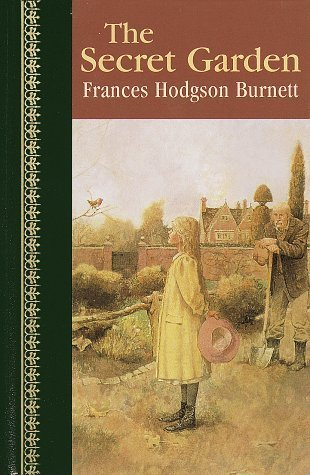
Blurb –
When orphaned Mary Lennox comes to live at her uncle’s great house on the Yorkshire Moors, she finds it full of secrets. The mansion has nearly one hundred rooms, and her uncle keeps himself locked up. And at night, she hears the sound of crying down one of the long corridors. The gardens surrounding the large property are Mary’s only escape. Then, Mary discovers a secret garden, surrounded by walls and locked with a missing key. One day, with the help of two unexpected companions, she discovers a way in. Is everything in the garden dead, or can Mary bring it back to life?
One of the most delightful and enduring classics of children’s literature, The Secret Garden has remained a firm favorite with children the world over ever since it made its first appearance. Initially published as a serial story in 1910 in The American Magazine, it was brought out in novel form in 1911.
LonelinessThis is particularly common in teenagers who feel isolated and lonely when they are caught up in a whirlwind of hormones that they don’t understand and can’t control. Teenagers want to be ‘part of the herd’ and the same as their friends and peer group. If they aren’t the same for various reasons including health issues, learning barriers or abilities, isolation can set in. Reading about other youngsters who are experiencing the same challenges or even unusual physical or intellectual achievements, helps promote self acceptance and reduce loneliness.
A good example of a book that involves peer pressure and the need to belong is Are You There God? It’s Me, Margaret.
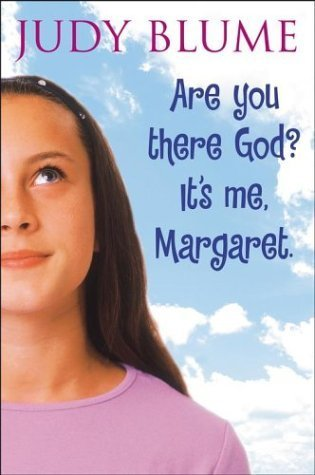
Blurb: Margaret Simon, almost twelve, likes long hair, tuna fish, the smell of rain, and things that are pink. She’s just moved from New York City to Farbook, New Jersey, and is anxious to fit in with her new friends—Nancy, Gretchen, and Janie. When they form a secret club to talk about private subjects like boys, bras, and getting their first periods, Margaret is happy to belong.
But none of them can believe Margaret doesn’t have religion, and that she isn’t going to the Y or the Jewish Community Center. What they don’t know is Margaret has her own very special relationship with God. She can talk to God about everything—family, friends, even Moose Freed, her secret crush.
Margaret is funny and real, and her thoughts and feelings are oh-so-relatable—you’ll feel like she’s talking right to you, sharing her secrets with a friend.
Reduces depression and anxietyReading a good book full of joy and happiness helps lift low spirits. For example, reading about the dwarves and Bilbo enjoying clotted cream and honey on freshly baked bread at the home of Beorn, is uplifting. Reading about Harry Potter and his friends defeating Voltemort and his Deatheaters is absorbing and fills the reader with courage and enthusiasm. Many books give the reader a wonderful sense of well being and satisfaction when the adversity comprising the plot is resolved.
Developing social skillsReading helps youngsters learn how to negotiate and deal with different social situations. It teaches them about romance and the emotions of love, and also rejection and sadness when romance ends or goes wrong. Reading about other people experiencing traumatic and difficult situations helps develop empathy and facilitates the development of meaningful relationships with different people from different backgrounds, cultures and religions.
I am David by Anne Holm is a wonderful book to teach children about gaining social skills. David has to learn to socialise with Maria and her brothers after he saves her from the fire. It is difficult for David who grow up in a concentration camp and only socialised with adults held in captivity.
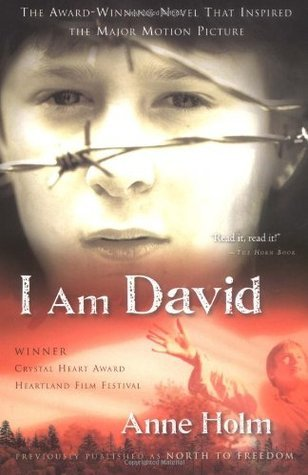
Blurb – David’s entire twelve-year life has been spent in a grisly prison camp in Eastern Europe. He knows nothing of the outside world. But when he is given the chance to escape, he seizes it. With his vengeful enemies hot on his heels, David struggles to cope in this strange new world, where his only resources are a compass, a few crusts of bread, his two aching feet, and some vague advice to seek refuge in Denmark. Is that enough to survive?
David’s extraordinary odyssey is dramatically chronicled in Anne Holm’s classic about the meaning of freedom and the power of hope.
Reading is a wonderful way for children and teens to wind down before sleeping. Today’s children and teens are continuously busy and subject to an endless barrage of mental stimulation. This can make sleep elusive and lack of sleep is very bad for mental health. Reading before bed is the perfect way to wind down after a long day.
About Robbie Cheadle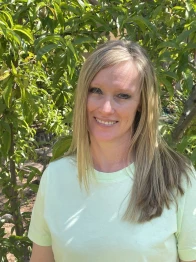
Award-winning, bestselling author, Robbie Cheadle, has published thirteen children’s book and three poetry books. Her work has also appeared in poetry and short story anthologies.
Robbie also has two novels published under the name of Roberta Eaton Cheadle and has horror, paranormal, and fantasy short stories featured in several anthologies under this name.
The ten Sir Chocolate children’s picture books, co-authored by Robbie and Michael Cheadle, are written in sweet, short rhymes which are easy for young children to follow and are illustrated with pictures of delicious cakes and cake decorations. Each book also includes simple recipes or biscuit art directions which children can make under adult supervision.
Robbie’s blog includes recipes, fondant and cake artwork, poetry, and book reviews. https://robbiesinspiration.wordpress.com/
July 10, 2023
Review in Practice: Million Dollar Productivity

I have to tell you, Kevin J. Anderson is the most prolific writer I know, but there are others. I met many of these incredibly productive authors through my studies under Kevin J. Anderson. I think they all hang out together. And honestly, when I first began to see what KJA does, putting out at least five novels a year, plus co-authoring books and screenplays adapted from his books, run WordFire Press, orchestrate his SuperStars Seminars every February and his classes at Western Colorado State University, and go to numerous Cons and writing seminars throughout each year, all I could say was, “Wow!”
Million Dollar Productivity, by Kevin J. Anderson is the book where he reveals all the tips and tricks which make him into the most prolific writer I know. So, when I received a digital copy of Million Dollar Productivity, for the 9th Stretch goal met in KJA’s Dragon Business Kickstarter Campaign last January, I had to give it a read. (I had already read the companion reward book for this stretch goal, On Being a Dictator. You can read my review here.) As I had suspected, I already knew and practiced many of the tips given in this book. After all, I studied under the author. But there were others that I either didn’t know about or hadn’t tried.
One of the ones I think have been most helpful to me was to set goals and stick to them. In class, we were required to create business plans and set goals for the coming year. I began to employ this strategy in the fall of 2021, a year in which I had published two anthologies, one poetry and one short fiction, and nothing else. When I am listening to people in the business who are telling me that you need to have a large inventory of IP (intellectual propeties), be prolific enough to put out several books each year, and have multiple streams of income to make a sustainable living from your writing, and looking at the couple of books per year that I was putting out, I knew I was going to have to do better, and I planned accordingly. I found that making a plan and setting some goals which keeps me moving in a forward progression.
As a result, in 2022, I published five anthologies: Ask the Authors 2022, Poetry Treasures 2: Relationships, Once Upon an Ever After, Refracted Reflections, and Visions. Anthologies probably aren’t as helpful as novels would be, but it was a start. In 2023, I will publish two anthologies, Poetry Treasures 3: Passions and Midnight Roost, plus two books of my own, Delilah and The Rock Star & the Outlaw, and of course, my debut poetry collection, Small Wonders. And I’ve already begun to plan out the books I intend to publish in the coming year. You have to admit, four to five books per year is an improvement on the one or two per year that I was producing previously, so that one suggestion, which is offered in this book, helped to make me a more prolific publisher.
Working on different projects at the same time is another tip which I have found helpful, although this is something that I have done for several years, but it is included in Million Dollar Productivity, and it is an effective strategy for getting a lot accomplished. I’m not talking about multi-tasking, but more like time-sharing – you work on your latest manuscript for a time, but when you seem to tire of it, you set it down and go work on the editing for the anthology you’re working on, and when you get tired of that, answer a few emails and then back to writing, for instance. Of course, KJA suggests an approach that is a little less haphazard, but it’s good advice none-the-less. He also points out other modes of writing, which can be used in various places.
Letting the first draft be bad and edit, goes hand-in-hand with knowing the difference between writing and editing, tips which most writers have heard many times in their writing careers, but that doesn’t make them any less true. These are both tips that I will have to work at incorporating into my writer’s toolbox. I am notorious for editing as I go, which takes extra time, but turns out a top quality draft with little editing required.
This book is filled with lots of writing tips and advice for busy authors who want to increase their productivity. These are the strategies that worked for the author, Kevin J. Anderson, and they could work for me or you. Whether you’re a full time author or one who writes on the side while working at some other job for your livlihood, this book will have something helpful for you. It’s one of those books I will have to go back and visit time and again.
_________________________________________________________________

For Kaye Lynne Booth, writing is a passion. Kaye Lynne is an author with published short fiction and poetry, both online and in print, including her short story collection, Last Call and Other Short Fiction; and her paranormal mystery novella, Hidden Secrets; and book 1 of her Women in the West adventure series, Delilah. Kaye holds a dual M.F.A. degree in Creative Writing with emphasis in genre fiction and screenwriting, and an M.A. in publishing. Kaye Lynne is the founder of WordCrafter Quality Writing & Author Services and WordCrafter Press. She also maintains an authors’ blog and website, Writing to be Read, where she publishes content of interest in the literary world.
____________________________________________________________________
Want exclusive content? Join Kaye Lynne Booth & WordCrafter Press Readers’ Group for WordCrafter Press book & event news, including the awesome releases of author Kaye Lynne Booth. She won’t flood your inbox, she NEVER sells her list, and you might get a freebie occasionally. Get a free digital copy of her short story collection, Last Call and Other Short Fiction, just for joining.
Writing to be Read
- Kaye Lynne Booth's profile
- 37 followers




